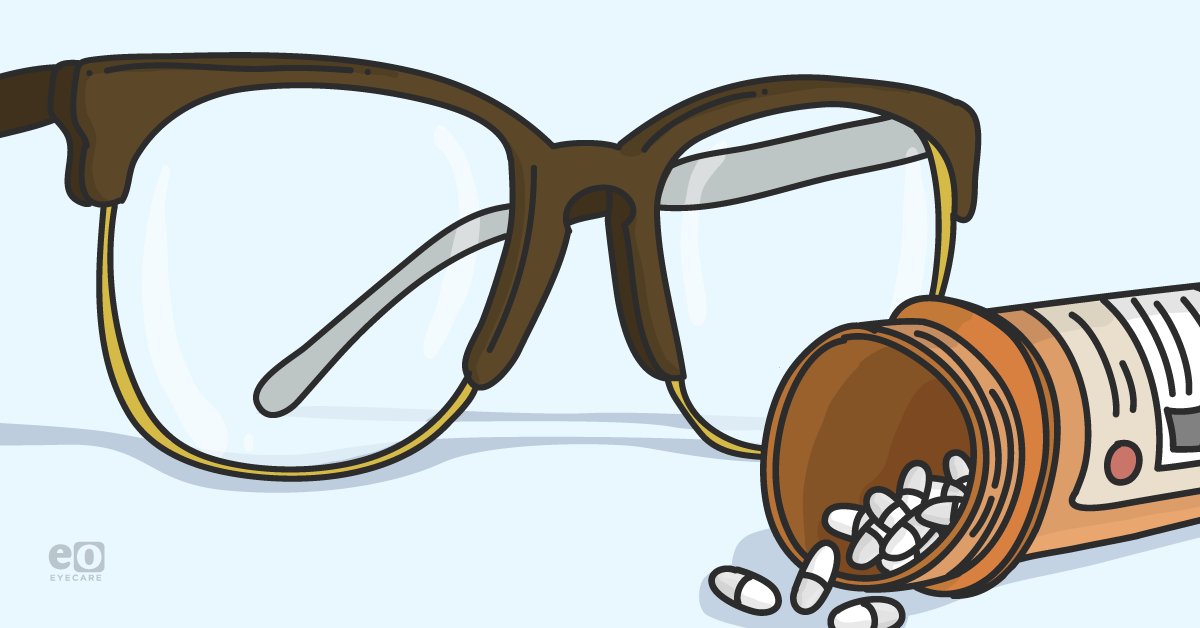As optometrists, it is important that we are aware of the possible ocular complications that can occur from the use of high risk medications. Patients starting chloroquine (CQ) or hydroxychloroquine (HCQ; i.e. Plaquenil) should have a baseline examination that serves as a reference point, as well as to rule out any preexisting maculopathies.
While most rheumatologists are now routinely prescribing their patients 400 mg of HCQ (or 250 mg CQ) daily for the management of conditions like systemic lupus erythematosus and rheumatoid arthritis, individuals of short stature often have their dosage determined off of their ideal body weight to avoid overdosing.
Annual screening should begin after 5 years of medication use, unless the patient has risk factors which warrants earlier screening.
Daily Dose and Duration of Use
Early literature suggested that cumulative dosage was indicative of risk factor. However, a more accurate assessment is based on duration AND daily dose/weight factor. The most critical risk factor in the development of HCQ toxicity is excessive daily dose by <5.0 mg/kg weight. There’s no new data for CQ, but older literature suggests using <2.5 mg/kg weight.
Racial Differences in Pattern of Retinopathy
We’ve always learned that toxic damage occurs parafoveal (bull’s eye pattern). But, in Asian patients, there’s a pericentral pattern of damage. This requires an adjustment in screening methods as explained below.
Review:
- Parafoveal - retinal changes 2-6 degrees from the fovea
- Pericentral - retinal changes >8 degrees from the fovea
Risk of Toxicity
Dependent on daily dose and duration of use. The risk of toxicity for the first 5 years is <1%, and up to 10 years is <2%. The risk increases to 20% after 20 years, and 4% for every subsequent year.
Other Risk Factors
Major risk factors are high dose, duration of use, renal impairment, tamoxifen use, and macular disease.
Screening for Chloroquine & Hydroxychloroquine (Plaquenil) Retinopathy
- Eye Examination:
- Baseline: Complete ocular health examination including a dilated retinal assessment. Fundus examination within one year. May consider baseline VF and OCT (especially if abnormalities are present).
- Annual Screening: May be started after 5 years of use, or sooner if presence of major risk factors
- Visual field
- Non-Asian patients: 10-2
- Asian patients: 24-2 or 30-2
- One (or more) of the following tests:
- OCT of the Macula
- Concern: Parafoveal thinning of photoreceptor layers and/or loss of the inner-segment/outer-segment junction
- Concern in Asian patients: extra-macular pattern of disease with abnormalities beyond the visual arcades. Wide-field OCT may be necessary.
- Multifocal ERG
- Concern: Decreased parafoveal waveform amplitudes (may need to extend to 20 degrees eccentricity in Asian patients)
- Fundus autofluorescence
- Concern: Parafoveal hyperfluorescence (widefield observation may be required for Asian patients to detect extramacular disease)
It's critical to educate your patients on the risk of toxicity and the importance of screening. If early changes and/or visual loss is detected, consult with your patient's prescribing doctor immediately, as they should discontinue the medication and consider alternative therapies.
References:
- Marmor MF, Kellner U, Lai TY, Melles RB, Mieler WF; American Academy of Ophthalmology. Recommendations on Screening for Chloroquine and Hydroxychloroquine Retinopathy (2016 Revision). Ophthalmology. 2016 Jun;123(6):1386-94. doi: 10.1016/j.ophtha.2016.01.058. Epub 2016 Mar 16. PMID: 26992838.
- “Recommendations on Screening for Chloroquine and Hydroxychloroquine Retinopathy - 2016.” American Academy of Ophthalmology, 20 May 2016, www.aao.org/clinical-statement/revised-recommendations-on-screening-chloroquine-h.
